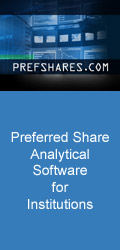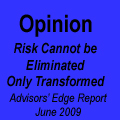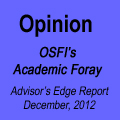Philip R Lane, Member of the Executive Board of the European Central Bank, gave a speech titled Monetary policy tightening and the financing of firms:
As the cost of borrowing increased and banks tightened their requirements for loan approvals, bank lending to firms has slowed. Bank credit as a share of GDP is declining – faster, in fact, than in previous tightening episodes – and markets expect it to decline significantly further this year (Chart 9). There are several factors driving this. First, the current tightening has occurred against the backdrop of adverseaggregate supply shocks. Second, the current reduction in credit supply is stronger than usual, mainlyreflecting heightened risk perceptions on the bank side. Third, the pace and size of the current policy rateincreases is extraordinary. This might imply a higher sensitivity of borrowing to rate increases at thecurrent juncture.
…
The second source of external financing for firms is through corporate bond issuance. Net issuance ofdebt securities was basically flat in the first three quarters of 2022 (Chart 10). Tighter monetary policyincreases the cost of market-based debt more quickly than that of bank loans. Market-based finance became relatively more expensive in the initial tightening phase, leading to a shift from debt issuance tobank loans. However, the acceleration of the pass-through to lending rates in the last quarter of 2022 has reduced the relative attractiveness of bank loans, leading to a rebound in corporate bond issuance at theend of 2022. In February of this year, however, net issuance of corporate bonds turned negative again,meaning that firms are now issuing fewer new securities than are maturing. Together with the negative bank lending flows, this contributes to the fast decline in overall debt financing obtained by firms.I now turn to the cost of corporate bond financing in more detail. The average yield on non-financialcorporate bonds has increased by over 300 basis points since the end of 2021. This increase is similar tothe increase in the cost of bank bond funding. It largely reflects changes in the risk-free rates due to themonetary policy tightening, as spreads – the difference between bond yields and risk-free rates – haveincreased less strongly over the same period (Chart 11). Corporate bond spreads have relativelycontained for both investment grade and high-yield securities during this tightening cycle, despite severalepisodic spikes. These bond spreads currently stand higher than in late 2021, at the beginning of ourmonetary policy normalisation cycle, but have remained roughly at the same level since June 2022.
The increase in spreads in the first half of 2022 points to increasing credit risk concerns in financialmarkets in the context of high macroeconomic uncertainty due to the Russian war against Ukraine and the energy price shock. While spreads showed some volatility since the summer of 2022, these had almost fully returned to 2021 levels before the banking turmoil triggered by the collapse of several mid-sized banks in the United States in March 2023. This episode led to a significant increase in spreads for both safer and riskier bonds, given the prevailing risk-off attitude in markets. However, spreads have already partly reversed these increases in the last few weeks.
Michelle W Bowman, Member of the Board of Governors of the Federal Reserve System, gave a speech titled Considerations for a Central Bank Digital Currency:
In broad terms, a CBDC is simply a new form of digital liability of a central bank. Because it is issued by a central bank, CBDC is typically thought of as being denominated in the currency of that central bank. One could imagine a digital U.S. dollar, a digital euro, or a digital pound. Beyond this baseline definition though, “what is a CBDC” defies a simple definition. A CBDC built on distributed ledger technology offers a wide range of design and potential use options, as well as potential risks. This variability complicates any discussion of a CBDC simply because we may not be talking about the same thing.
There are two threshold questions that a policymaker needs to ask before any decision to move forward with a CBDC. First, what problem is the policymaker trying to solve, and is a CBDC a potential solution? Second, what features and considerations—including unintended consequences—may a policymaker want to consider in deciding to design and adopt a CBDC? While it would be impossible for me to provide a comprehensive analysis of every issue surrounding CBDC, my goal today is to offer a perspective on these two threshold questions and to conclude with some thoughts about the imperative for future research on CBDCs and the potential future of CBDCs in the United States.
…
One issue being examined is whether a CBDC or even broader forms of digital money could make the payment system more efficient. Do these new technologies present opportunities to increase the speed of payments and/or lower costs and frictions within the payment system?
…
Another issue that some have raised is whether innovation in money and payments, including a potential U.S. CBDC, could improve financial inclusion. We can all agree that financial inclusion is an important goal when considering improvements in access to financial services, banking, and the payment system. However, in the United States today, over 95 percent of households have a least one member of the household with a banking relationship holding a checking or savings account.6 Of the remaining 4.5 percent who are not banked, nearly three-quarters have no interest in having a bank account, and approximately one-third cited a lack of trust in banks as the reason for not having a bank account. I think it is unlikely that this group would find the government somehow more trustworthy than highly regulated banks. Unbanked households are also less likely to own mobile phones or have access to the internet, which would present barriers to CBDC adoption. While there has been important research on these barriers to adoption, including consumer attitudes and technology requirements, policymakers also need to consider whether there are other means to improve financial inclusion, such as alternatives for making the distribution of government benefits more efficient and effective like promoting financial literacy.
…
Another issue is whether the government should use new technologies, including a potential CBDC, to accomplish a variety of policy objectives beyond those directly related to the operating of an efficient and safe financial system. Imagine a scenario in which fiscal spending, in the form of government benefits or payments, could be transferred via CBDC and could include a limited timeframe in which they could be spent before expiring.
…
As I previously noted, the introduction of the FedNow Service in the United States and other instant payments platforms globally leads me to ask: What could a CBDC accomplish, if anything, over and above what instant payments platforms alone can accomplish? There are potential use cases in the context of certain interbank transactions in wholesale markets, where some transactions are slow and heavily resource-intensive to clear and settle. Participants in the wholesale financial markets have been considering innovative ways to address these frictions with newer technologies such as distributed ledger technology in which shared information across counterparties could be leveraged to increase speed and reduce back-office costs to reconcile transactions before they settle. In the public debate about CBDC, some have argued that the introduction of a wholesale version of a CBDC could fully unlock the benefits of these newer technologies for these financial market use cases.
…
In jurisdictions that have not adopted a CBDC, cash is generally the only central bank money available to the public, and it remains an important and popular means of payment. In some countries, however, digital payments have rapidly supplanted the use of cash. As a result of this trend, many central banks have cited the importance of access to central bank money by the general public as a potential reason to issue a CBDC. For example, Sir Jon Cunliffe of the United Kingdom examined the central role money plays in social and economic stability and concluded that, because private money has been replacing the use of government money over time, at some point “a retail, general purpose digital currency …will be needed in the U.K.”
…
Some new private forms of money, often referred to as stablecoins, have emerged mainly to support trading in the crypto-asset ecosystem both as a means of payment and as a store of value. These stablecoins, which purport to have convertibility one-for-one with the dollar, have also been discussed as an alternative to traditional payments. However, stablecoins are less secure, less stable, and less regulated than traditional forms of money. and their structures and frameworks are opaque. To the extent stablecoins become widely used in day-to-day payments, these features could raise significant concerns. Of course, issuing a CBDC has been discussed as a potential alternative to stablecoins that could address some of these shortcomings. It is also possible that Congress could pass legislation to strengthen the regulation and oversight of stablecoins to mitigate some of these issues.
PerpetualDiscounts now yield 6.21%, equivalent to 8.07% interest at the standard equivalency factor of 1.3x. Long corporates yielded 5.10% on 2023-4-14 and since then the closing price has changed from 15.00 to 15.10, an increase of 67bp in price, with a Duration of 12.31 (BMO doesn’t specify whether this is Macaulay or Modified Duration; I will assume Modified) which implies a decrease in yield of about 5bp since 4/14 to 5.05%, so the pre-tax interest-equivalent spread (in this context, the “Seniority Spread”) has narrowed to about 300bp from the 310bp reported April 12.
| HIMIPref™ Preferred Indices These values reflect the December 2008 revision of the HIMIPref™ Indices Values are provisional and are finalized monthly |
|||||||
| Index | Mean Current Yield (at bid) |
Median YTW |
Median Average Trading Value |
Median Mod Dur (YTW) |
Issues | Day’s Perf. | Index Value |
| Ratchet | 0.00 % | 0.00 % | 0 | 0.00 | 0 | 0.0834 % | 2,307.5 |
| FixedFloater | 0.00 % | 0.00 % | 0 | 0.00 | 0 | 0.0834 % | 4,425.7 |
| Floater | 9.77 % | 9.93 % | 38,930 | 9.59 | 2 | 0.0834 % | 2,550.5 |
| OpRet | 0.00 % | 0.00 % | 0 | 0.00 | 0 | -0.0671 % | 3,358.1 |
| SplitShare | 5.01 % | 7.19 % | 45,582 | 2.62 | 7 | -0.0671 % | 4,010.2 |
| Interest-Bearing | 0.00 % | 0.00 % | 0 | 0.00 | 0 | -0.0671 % | 3,128.9 |
| Perpetual-Premium | 0.00 % | 0.00 % | 0 | 0.00 | 0 | -0.0694 % | 2,767.2 |
| Perpetual-Discount | 6.17 % | 6.21 % | 51,097 | 13.55 | 34 | -0.0694 % | 3,017.5 |
| FixedReset Disc | 5.71 % | 7.69 % | 85,416 | 11.98 | 63 | 0.2830 % | 2,161.6 |
| Insurance Straight | 6.07 % | 6.14 % | 71,499 | 13.70 | 19 | -0.2388 % | 2,964.2 |
| FloatingReset | 10.39 % | 10.92 % | 44,359 | 8.85 | 2 | 0.4414 % | 2,400.9 |
| FixedReset Prem | 6.90 % | 6.49 % | 326,491 | 3.92 | 1 | 0.0000 % | 2,341.2 |
| FixedReset Bank Non | 0.00 % | 0.00 % | 0 | 0.00 | 0 | 0.2830 % | 2,209.6 |
| FixedReset Ins Non | 6.01 % | 7.61 % | 66,033 | 11.86 | 11 | 0.2601 % | 2,319.4 |
| Performance Highlights | |||
| Issue | Index | Change | Notes |
| FTS.PR.H | FixedReset Disc | -1.90 % | YTW SCENARIO Maturity Type : Limit Maturity Maturity Date : 2053-04-19 Maturity Price : 12.36 Evaluated at bid price : 12.36 Bid-YTW : 8.73 % |
| PWF.PR.T | FixedReset Disc | -1.83 % | YTW SCENARIO Maturity Type : Limit Maturity Maturity Date : 2053-04-19 Maturity Price : 17.20 Evaluated at bid price : 17.20 Bid-YTW : 8.11 % |
| PWF.PR.O | Perpetual-Discount | -1.50 % | YTW SCENARIO Maturity Type : Limit Maturity Maturity Date : 2053-04-19 Maturity Price : 22.71 Evaluated at bid price : 22.95 Bid-YTW : 6.34 % |
| RY.PR.O | Perpetual-Discount | -1.38 % | YTW SCENARIO Maturity Type : Limit Maturity Maturity Date : 2053-04-19 Maturity Price : 21.72 Evaluated at bid price : 22.14 Bid-YTW : 5.60 % |
| PVS.PR.K | SplitShare | -1.35 % | YTW SCENARIO Maturity Type : Hard Maturity Maturity Date : 2029-05-31 Maturity Price : 25.00 Evaluated at bid price : 22.00 Bid-YTW : 7.04 % |
| BN.PR.R | FixedReset Disc | -1.31 % | YTW SCENARIO Maturity Type : Limit Maturity Maturity Date : 2053-04-19 Maturity Price : 13.51 Evaluated at bid price : 13.51 Bid-YTW : 9.34 % |
| TRP.PR.B | FixedReset Disc | -1.30 % | YTW SCENARIO Maturity Type : Limit Maturity Maturity Date : 2053-04-19 Maturity Price : 10.61 Evaluated at bid price : 10.61 Bid-YTW : 9.63 % |
| CM.PR.S | FixedReset Disc | -1.29 % | YTW SCENARIO Maturity Type : Limit Maturity Maturity Date : 2053-04-19 Maturity Price : 21.42 Evaluated at bid price : 21.42 Bid-YTW : 6.77 % |
| BMO.PR.Y | FixedReset Disc | -1.14 % | YTW SCENARIO Maturity Type : Limit Maturity Maturity Date : 2053-04-19 Maturity Price : 18.20 Evaluated at bid price : 18.20 Bid-YTW : 7.67 % |
| PWF.PR.H | Perpetual-Discount | -1.04 % | YTW SCENARIO Maturity Type : Limit Maturity Maturity Date : 2053-04-19 Maturity Price : 22.53 Evaluated at bid price : 22.78 Bid-YTW : 6.33 % |
| BN.PF.C | Perpetual-Discount | 1.01 % | YTW SCENARIO Maturity Type : Limit Maturity Maturity Date : 2053-04-19 Maturity Price : 19.00 Evaluated at bid price : 19.00 Bid-YTW : 6.46 % |
| BN.PF.F | FixedReset Disc | 1.04 % | YTW SCENARIO Maturity Type : Limit Maturity Maturity Date : 2053-04-19 Maturity Price : 16.50 Evaluated at bid price : 16.50 Bid-YTW : 9.06 % |
| BMO.PR.F | FixedReset Disc | 1.04 % | YTW SCENARIO Maturity Type : Limit Maturity Maturity Date : 2053-04-19 Maturity Price : 23.71 Evaluated at bid price : 24.20 Bid-YTW : 6.98 % |
| TD.PF.L | FixedReset Disc | 1.07 % | YTW SCENARIO Maturity Type : Limit Maturity Maturity Date : 2053-04-19 Maturity Price : 23.10 Evaluated at bid price : 23.65 Bid-YTW : 6.84 % |
| NA.PR.E | FixedReset Disc | 1.17 % | YTW SCENARIO Maturity Type : Limit Maturity Maturity Date : 2053-04-19 Maturity Price : 20.80 Evaluated at bid price : 20.80 Bid-YTW : 7.04 % |
| TD.PF.K | FixedReset Disc | 1.21 % | YTW SCENARIO Maturity Type : Limit Maturity Maturity Date : 2053-04-19 Maturity Price : 20.85 Evaluated at bid price : 20.85 Bid-YTW : 7.00 % |
| MIC.PR.A | Perpetual-Discount | 1.35 % | YTW SCENARIO Maturity Type : Limit Maturity Maturity Date : 2053-04-19 Maturity Price : 21.00 Evaluated at bid price : 21.00 Bid-YTW : 6.50 % |
| TRP.PR.A | FixedReset Disc | 1.45 % | YTW SCENARIO Maturity Type : Limit Maturity Maturity Date : 2053-04-19 Maturity Price : 14.00 Evaluated at bid price : 14.00 Bid-YTW : 8.99 % |
| BN.PF.H | FixedReset Disc | 1.60 % | YTW SCENARIO Maturity Type : Limit Maturity Maturity Date : 2053-04-19 Maturity Price : 21.27 Evaluated at bid price : 21.55 Bid-YTW : 8.16 % |
| BN.PF.A | FixedReset Disc | 1.64 % | YTW SCENARIO Maturity Type : Limit Maturity Maturity Date : 2053-04-19 Maturity Price : 18.58 Evaluated at bid price : 18.58 Bid-YTW : 8.38 % |
| BN.PF.I | FixedReset Disc | 2.03 % | YTW SCENARIO Maturity Type : Limit Maturity Maturity Date : 2053-04-19 Maturity Price : 20.10 Evaluated at bid price : 20.10 Bid-YTW : 8.35 % |
| BIP.PR.B | FixedReset Disc | 2.07 % | YTW SCENARIO Maturity Type : Limit Maturity Maturity Date : 2053-04-19 Maturity Price : 21.89 Evaluated at bid price : 22.15 Bid-YTW : 8.38 % |
| GWO.PR.N | FixedReset Ins Non | 3.39 % | YTW SCENARIO Maturity Type : Limit Maturity Maturity Date : 2053-04-19 Maturity Price : 12.21 Evaluated at bid price : 12.21 Bid-YTW : 8.30 % |
| BIP.PR.F | FixedReset Disc | 3.52 % | YTW SCENARIO Maturity Type : Limit Maturity Maturity Date : 2053-04-19 Maturity Price : 19.68 Evaluated at bid price : 19.68 Bid-YTW : 7.90 % |
| Volume Highlights | |||
| Issue | Index | Shares Traded |
Notes |
| CM.PR.S | FixedReset Disc | 25,444 | YTW SCENARIO Maturity Type : Limit Maturity Maturity Date : 2053-04-19 Maturity Price : 21.42 Evaluated at bid price : 21.42 Bid-YTW : 6.77 % |
| MFC.PR.K | FixedReset Ins Non | 24,400 | YTW SCENARIO Maturity Type : Limit Maturity Maturity Date : 2053-04-19 Maturity Price : 17.73 Evaluated at bid price : 17.73 Bid-YTW : 7.82 % |
| BMO.PR.S | FixedReset Disc | 23,583 | YTW SCENARIO Maturity Type : Limit Maturity Maturity Date : 2053-04-19 Maturity Price : 18.38 Evaluated at bid price : 18.38 Bid-YTW : 7.57 % |
| CM.PR.Q | FixedReset Disc | 16,910 | YTW SCENARIO Maturity Type : Limit Maturity Maturity Date : 2053-04-19 Maturity Price : 18.26 Evaluated at bid price : 18.26 Bid-YTW : 7.64 % |
| TRP.PR.G | FixedReset Disc | 15,344 | YTW SCENARIO Maturity Type : Limit Maturity Maturity Date : 2053-04-19 Maturity Price : 16.40 Evaluated at bid price : 16.40 Bid-YTW : 8.69 % |
| TD.PF.B | FixedReset Disc | 14,451 | YTW SCENARIO Maturity Type : Limit Maturity Maturity Date : 2053-04-19 Maturity Price : 17.18 Evaluated at bid price : 17.18 Bid-YTW : 7.82 % |
| There were 8 other index-included issues trading in excess of 10,000 shares. | |||
| Wide Spread Highlights | ||
| Issue | Index | Quote Data and Yield Notes |
| CU.PR.E | Perpetual-Discount | Quote: 20.06 – 23.72 Spot Rate : 3.6600 Average : 2.0509 YTW SCENARIO |
| IFC.PR.C | FixedReset Disc | Quote: 18.02 – 19.38 Spot Rate : 1.3600 Average : 0.7882 YTW SCENARIO |
| BMO.PR.S | FixedReset Disc | Quote: 18.38 – 19.24 Spot Rate : 0.8600 Average : 0.5362 YTW SCENARIO |
| MFC.PR.M | FixedReset Ins Non | Quote: 16.70 – 17.43 Spot Rate : 0.7300 Average : 0.4786 YTW SCENARIO |
| RY.PR.Z | FixedReset Disc | Quote: 17.45 – 18.09 Spot Rate : 0.6400 Average : 0.4165 YTW SCENARIO |
| TD.PF.D | FixedReset Disc | Quote: 18.45 – 19.70 Spot Rate : 1.2500 Average : 1.0332 YTW SCENARIO |













































































































NA.PR.E To Reset To 5.818%
April 17th, 2023National Bank of Canada has announced:
NA.PR.E is a FixedReset, 4.60%+258, NVCC-Compliant, that commenced trading 2018-1-22 after being announced 2018-1-12. It is tracked by HIMIPref™ and assigned to the FixedReset (Discount) subindex.
Thanks to niagara for bringing this to my attention.. And thanks also to Assiduous Reader MO!
Posted in Issue Comments | 5 Comments »